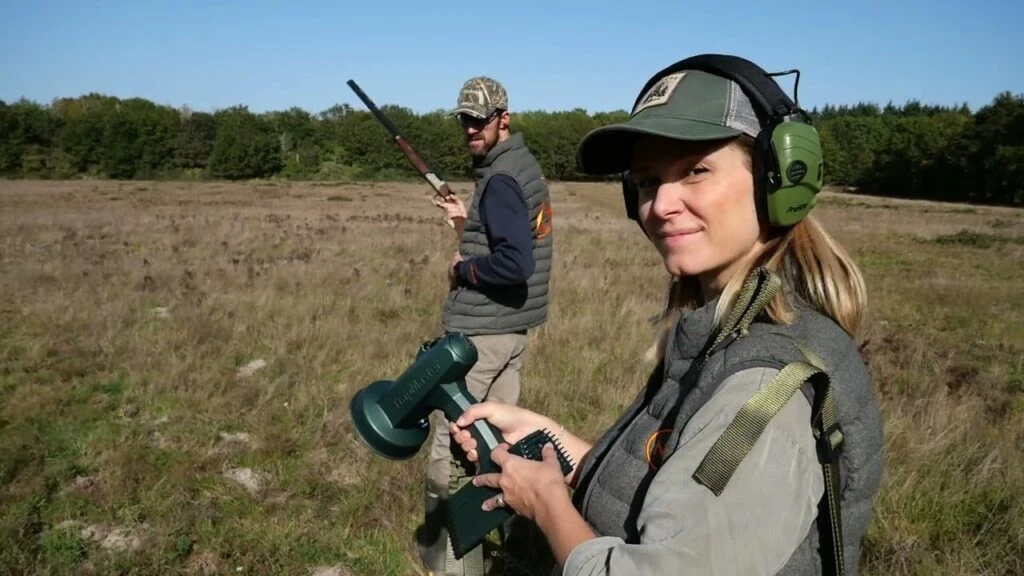Eco-friendly clay pigeons: How Nordic Clays leads the way
Would you consider eco-friendly clay pigeons? Imagine a sport where the thrill of the game meets the responsibility towards the environment. This is not just a dream scenario but a reality unfolding in the world of clay pigeon shooting, a sport that’s now taking a significant leap towards sustainability.
Clay pigeon shooting, a sport beloved by many for its skill, precision, and excitement, has long been a staple in recreational and competitive shooting. It involves participants using a shotgun to break clay targets flung into the air at high speeds, mimicking the flight path of birds. This sport, deeply rooted in tradition, has been practiced for generations, providing a challenging and enjoyable experience for enthusiasts of all skill levels.
However, the traditional sport comes with an environmental cost. The conventional clay pigeons, made from a mix of limestone and petroleum pitch, are not biodegradable. After a shooting event, pieces of these clay pigeons often litter the landscape, posing a significant environmental hazard. These fragments can take hundreds of years to decompose, leading to soil contamination and potential harm to wildlife.
Enter Nordic Clays, a pioneering company that’s addressing this issue head-on. Recognizing the environmental challenges posed by traditional clay pigeons, Nordic Clays has revolutionized the sport by introducing eco-friendly clay pigeons. These innovative targets are made from eco-friendly materials that are both biodegradable and non-toxic, ensuring that the environmental footprint of clay pigeon shooting is significantly reduced.
Read more about biodegradable clay pigeons

The problem with traditional clay pigeons
Clay pigeon shooting, a sport revered for its tradition and exhilaration, has an underlying environmental issue that often goes unnoticed. The core of the problem lies in the very heart of the sport – the clay pigeons themselves. These seemingly harmless discs, when broken down, reveal a more concerning picture, both ecologically and eco-friendly.
The environmental impact of traditional clay pigeons
Traditional clay pigeons are predominantly made from a mixture of limestone and petroleum pitch. This composition is effective for the purpose of the sport, but it comes with a significant environmental cost. The primary issue is their non-biodegradability. When these clay pigeons shatter, the fragments remain in the environment, often for hundreds of years. This leads to a gradual accumulation of debris in shooting areas, which is not just unsightly but also poses a long-term ecological threat.
- Soil contamination is another major concern. The remnants of traditional clay pigeons can leach chemicals into the soil, affecting its quality and potentially harming the local flora and fauna. This contamination can disrupt the natural balance of ecosystems, impacting not just the land where shooting activities take place, but also the surrounding areas.
The volume and waste concern
The volume of clay pigeons used in shooting sports contributes significantly to environmental degradation. Annually, millions of these discs are used in shooting ranges worldwide. The sheer number of clay pigeons manufactured, used, and subsequently broken leads to an alarming amount of waste. Unlike organic matter, these fragments don’t decompose naturally, resulting in an accumulation of waste over time. This not only affects the immediate environment of shooting ranges but also contributes to the broader issue of non-biodegradable waste globally.
Read our beginner’s guide to clay pigeon shooting.
Expert opinions and studies on environmental impacts
Environmental experts and several studies have raised concerns over the impact of traditional clay pigeons. Research indicates that the materials used in these pigeons can cause long-term environmental damage. For instance, a study published in the Journal of Environmental Management points out the risks associated with the heavy metals found in some clay pigeon fragments. These metals can seep into the soil and waterways, posing a threat to wildlife and even human health.
- Moreover, environmentalists argue that the sport’s reliance on non-renewable resources for pigeon manufacturing contradicts the global shift towards sustainable practices. The use of petroleum products, in particular, is a point of contention, considering the current climate crisis and the push for reducing fossil fuel dependence.
While clay pigeon shooting remains a popular and cherished sport, it’s essential to acknowledge and address the environmental concerns associated with traditional clay pigeons. The impact on soil, the non-biodegradable nature of the materials, and the sheer volume of waste generated call for a more sustainable approach to this sport. As we move forward, it’s imperative to consider alternatives that align with environmental conservation efforts while allowing enthusiasts to enjoy the sport responsibly.
Nordic Clays – A revolution in eco-friendly clay pigeons
In the world of clay pigeon shooting, a new chapter is being written by Nordic Clays, that’s pioneering an eco-friendly revolution in the sport. Their groundbreaking approach to manufacturing clay pigeons is setting a new standard, proving that environmental consciousness and sporting tradition can coexist harmoniously.

The Nordic Clays difference
The key differentiator of Nordic Clays’ products lies in the composition and manufacturing process. Unlike traditional clay pigeons, which are made from a blend of limestone and petroleum pitch, Nordic Clays has innovatively turned to eco-friendly and biodegradable materials.
What material is our Bio-Clays made of?
- Our Bio-Clays are made of a biodegradable granulate based on reclaimed potato, grain, root and seed flour based resources. (Also referred to as starch) In addition, 2% dye is added to the granulate to get the desired color.
Why is our Bio-Clays eco-friendly?
- Below you can see our newest test report of our Bio-Clays / Bio-Clays 1.0, where we have tested the PAH-content of our clays, to make sure they live up to the governments strict environmental regulations. PAH (polycyclic aromatic hydrocarbons) is a group of hydrocarbons, which poses a possible health and pollution problem that can have a negative impact on soil, wildlife, groundwater and surface water.
This shift in materials ensures that when Nordic Clays’ pigeons shatter, they do not harm the environment. The fragments, instead of lingering for centuries, break down naturally over a much shorter period. The clay pigeons do not only differ by their significant lower weight, but they also live up to the increasing demands for eco-friendliness and environmental considerations. Basically this means that you don’t have to pick up the pieces from the clay pigeons, which over time will dissolve in nature.
Read more about why clay pigeon shooting is the perfect outdoor activity
Biodegradability and eco-friendliness
The biodegradability of Nordic Clays’ products is their standout feature. These eco-friendly clay pigeons are designed to decompose naturally, without leaving harmful residues in the soil. The materials used are carefully chosen to ensure they break down into harmless substances that don’t disrupt the local ecosystems. This process not only aids in reducing soil contamination but also ensures that wildlife and plant life around shooting areas are not adversely affected.
Furthermore, the eco-friendliness of Nordic Clays’ products goes beyond just biodegradability. The absence of toxic materials means that even as the pigeons degrade, they do not release harmful chemicals into the environment. This aspect is particularly important for maintaining the quality of soil and groundwater in and around shooting ranges.
Embracing a greener future in clay pigeon shooting with Nordic Clays
As we’ve explored, the traditional practice of clay pigeon shooting, while steeped in history and beloved by many, has not been without its environmental drawbacks. The use of non-biodegradable, potentially harmful materials in conventional clay pigeons has raised significant concerns about soil contamination, wildlife impact, and the broader issue of non-renewable resource use. However, the advent of Nordic Clays marks a pivotal shift towards a more sustainable and environmentally conscious approach to this cherished sport.
Nordic Clays stands out as a beacon of innovation in the world of shooting sports. By reimagining the very core of clay pigeon shooting—the clay pigeon itself—Nordic Clays has demonstrated that it is possible to marry the thrill and skill of the sport with a deep commitment to environmental stewardship. Their eco-friendly clay pigeons, made from biodegradable materials like reclaimed potato, grain, root, and seed flour resources, ensure that the fragments left behind after a shooting event do not linger as pollutants but rather return harmlessly to the earth.
This commitment to eco-friendliness extends beyond just the product; it’s reflected in every aspect of Nordic Clays’ operations, from their manufacturing processes to their rigorous testing for harmful substances. Their approach addresses the pressing need to reduce our carbon footprint and aligns with global efforts to combat the climate crisis. By choosing Nordic Clays, shooters are not only enjoying their sport but also contributing positively to the health of our planet.
As we look to the future, it’s clear that eco-friendly practices in sports like clay pigeon shooting are not just a trend but a necessity. Nordic Clays is leading the way in showing how traditional sports can adapt and thrive in an increasingly eco-conscious world. Their success story serves as an inspiration and a model for other sports and industries to follow.










